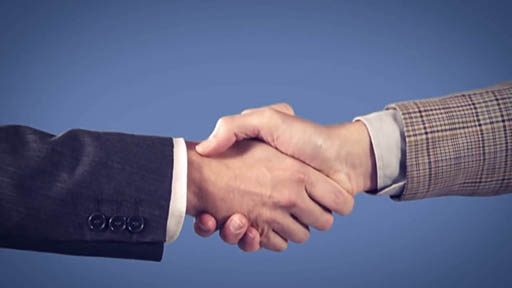1.1 Shaking hands
In the UK, a key part of your first impression is created by your handshake.
Note: the Covid-19 pandemic has changed this fact, but we’re leaving this section in the course for now as it should become relevant again when we are able to return to normality. We will review this decision as longer-term Government advice becomes clearer.
Watch this humorous video about bad handshakes from the Australian Government to see what you should avoid.

Transcript: Video 2
[BELL DINGS]
[MUSIC PLAYING]
So what should you do? Lennon (2018) makes the suggestions shown in Box 2.
Box 2 What makes a good handshake?
- Introduce yourself – tell the person who you are before you reach out and shake their hand.
- Initiate appropriately – it’s almost always appropriate to initiate a handshake during a greeting. Never leave an extended hand hanging.
- Use the correct hand – most people shake with their right hand, but be prepared to shake with your left hand if circumstances require that.
- Stand up – out of respect for the person you are greeting.
- Make eye contact – look a person in the eyes as you shake hands.
- Smile – establishing that you are a confident, friendly, genuine person.
- Grip firmly – a good tip is to match the grip of the interviewer.
- Shake from the elbow – two to three times.
- Repeat their name – saying something like ‘It’s great to meet you, Tom’ during the handshake can help you to remember their name later on.
You’ll now have a go yourself.
Activity 1 Shake some hands!
Find someone you know well and feel comfortable with and practise shaking their hand. Perhaps you could try some of the bad handshakes as well as the one you plan to use when you meet potential employers.
Note: during the Covid-19 pandemic, you’ll need to restrict this activity to those you are permitted to have physical contact with.
Discussion
That may have felt slightly awkward but the more you do it, the more natural it will feel. A strong, appropriate handshake is a great way to start a first impression.
